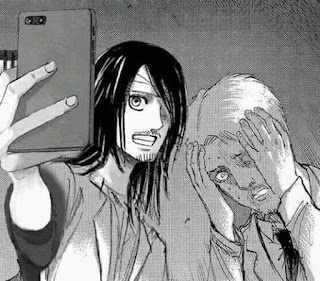Genre Research: Drama and Action
The next genre I researched was the Action genre. The powerpoint displays also covers the main aspects or common characteristics of action films. From camera angles, shots, lighting, sound a nd mise-en-scene, we can see that all action failm follow a rather similar format. Although a lot of these characteristics can very well be found in other genres, the various examples show how they are used in action.
Drama Genre-Common Things
Camera Angles
-High angles are extremely common in all genres and Drama is no exception. It is used to emphasize a point that director is trying to make that something or someone is inferior in most cases.
-Low angles are also very common in all genres but in Drama it is used to show the superiority of something or someone.
Camera Movement
-A pan is a camera movement that is used in every genre as well and is used to follow a subject in motion.
-Tracking is also used to follow a moving subject but the camera is usually placed on a track which allows it to move steadily with the subject
-Hand Held camera movement is also extremely common in drama to emphasize the rush or haste of something or to make a scene look a little more realistic, as if someone is literally holding the camera with their hands.
-Zooms are all prevalent used to capture a specific object or person to draw emphasis to it
-Reverse zooms are also used to capture an person conversation between two people
Shots
-Establishing Shots are used to display the location or setting that a scene takes place
-Close Ups are used to capture and emphasize a subject's face or expressions in drama.
-Mid Shots are used to capture as scene from a medium view; not too color or far away.
-Point-of-view shots are used to show what the character sees from their point of view
Mise-En-Scene
Lighting
-High Key lighting is used to illuminate a subject and minimize shadows.
-Low-key lighting is used create more shadows on a subject and is often used to create a mysterious/ominous feel in drama films
Acting
-Good acting makes o any film of any genre.
Setting
-The location at which a scene takes place.
Costume
-Costume is a crucial pat of any and every film and determines how well an actor fits in with the intended concept of the plot.
Makeup
-Makeup is all over drama films, this can be used to create a variety of illusions to make fake injuries look real.
Sound
-Diegetic sound is sound that you can see the source of. This can be character's talking, noises that objects make etc, as long as you can see what's making the noise, its diegetic
-Non-diegetic sound is when you can hear sound but there is no visible source as to where its coming from on screen. This is used drama when dramatic background music plays. this is a form of non-diegetic sound.
-Dialogue is used when a character speaks. Any form of this counts as dialogue
-Voice overs are used especially in drama because most are narrated by the main chapter. voice overs maybe necessary to provide context for a situation or to provide an insight on what that character is thinking as an event unfolds.
Movies in the Drama Genre
Emma
Teen Spirit
Everything, Everything
Cuties
Perfume: The Story of a Murderer
Elements that I Like
I enjoy the intricate plot of most drama films. They all tend to have an abundance of plot twists and conflicts which makes the film much more exiting in my opinion. I also enjoy the narrative plot structure where I only really get to see the point of view of the main character. Its all a part of what makes drama films so entertaining to watch
Elements that I Dislike
I don't hav every many elements that I dislike about this genre. Its my favorite so I don't have very much to say here.



Comments
Post a Comment